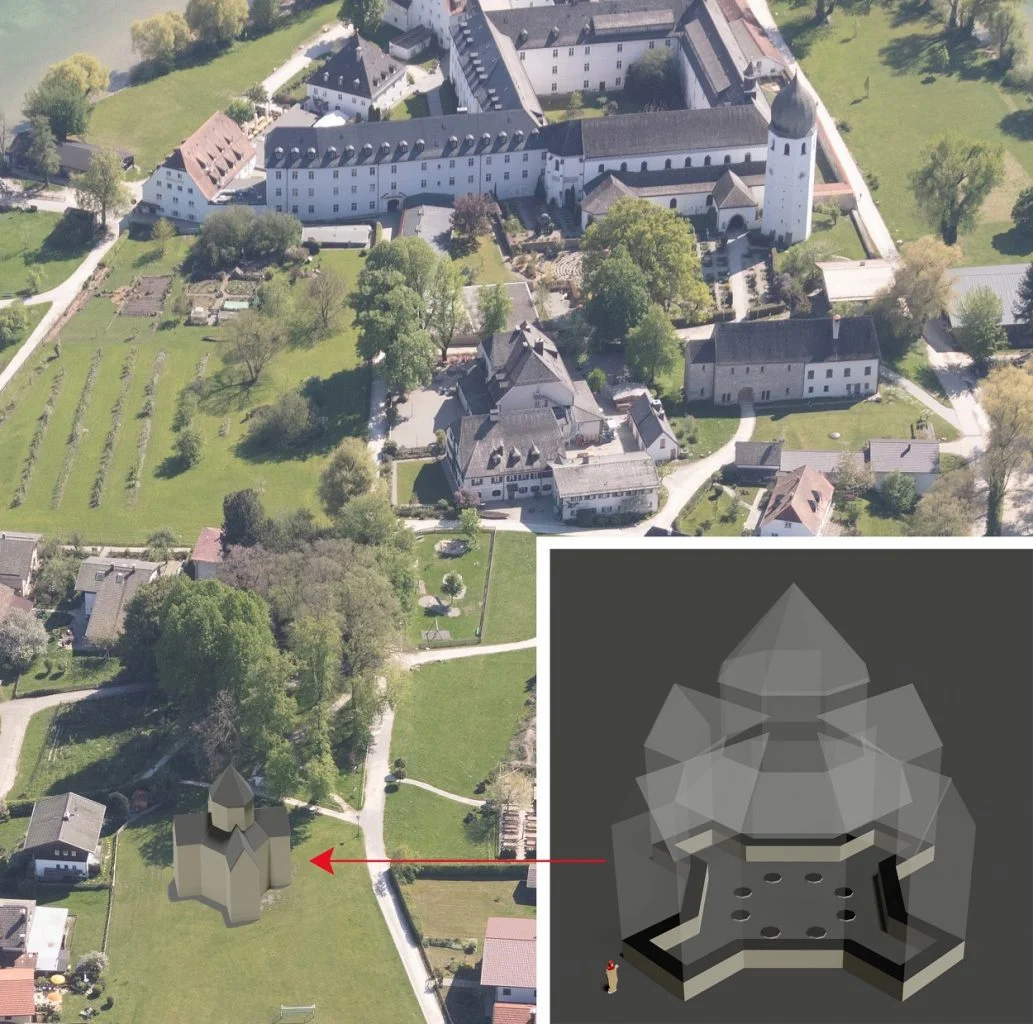Archaeologists from the Bavarian State Office for Monument Preservation have announced the discovery of a Romanesque religious structure on the island of Frauenchiemsee, the second largest of the three islands in Chiemsee, Germany.
According to the researchers, the structure holds important religious significance, suggesting it might have been erected to venerate Blessed Irmgard (also known as Irmengard), the daughter of King Louis the German and the great-granddaughter of Charlemagne.
During the mid-9th century, Irmgard was appointed the first abbess of Frauenwörth Abbey, who restored the decaying premises and founded a Benedictine convent for nuns. Because of her royal ancestry, she had the right to wear a thin golden hoop resembling a crown, often depicted on paintings and frescoes with her image.
Following her death in 866, Irmgard was venerated and her head reliquary was translated to Seeon Abbey in 1004. She was officially beatified in 1929 by Pope Pius XI, and a celebratory ceremony in 2003 saw her relics reunified.
A recent geophysical study to locate the demolished remains of the Church of Saint Martin has revealed the imprint of a Romanesque structure completely absent from all historical text and contemporary maps.

The structure is buried at a depth of 1 metre and measures 19 metres in diameter. The GPR results reveal the floor plan of an octagonal central building with an ambulatory formed by eight supports and four arrange in a cross shape.
Mathias Pfeil of the Bavarian State Office for Monument Preservation notes that religious structures with pre-Romanesque or Romanesque architecture, particularly those with sacral significance, are exceedingly uncommon north of the Alps. Such edifices are often perceived as imitations of the Church of the Holy Sepulchre in Jerusalem.
According to the researchers, the structure was likely built during the construction of the new monastery and Romanesque abbey church (of which the gatehouse and bell tower survive to this day) to venerate Irmgard as a destination for pilgrims
Header Image Credit : Bavarian State Office for Monument Preservation
Sources : Bavarian State Office for Monument Preservation





